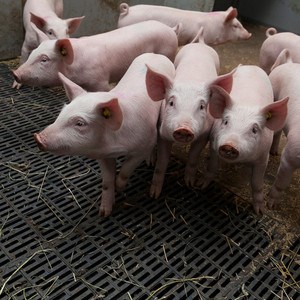Contact
Athanasios Pantelopoulos
Postdoctor at the Department of Soil and Environment
athanasios.pantelopoulos@slu.se, 018-672093, 072-2152716

Phosphorus is often accumulating in soils around modern farms. In a BalticWaters project, we study efficient and environmentally friendly nutrient recycling within the farm. In addition, we look at more feasible redistribution of nutrients between farms.
Modern animal production systems in general have high numbers and intensities of animals, and thereby large quantities of animal manure to handle. Manure treatment, storage capacity and land for manure application are important factors for high nutrient use efficiency in crop production and low losses to the environment, especially regarding phosphorus, which is often accumulating in soils around the farms.
In a research project, financed by the foundation BalticSea 2020, methods which will enable efficient and environmentally friendly nutrient recycling within the farm and a more feasible redistribution of nutrients between farms, are studied.
The study area is a pig production farm in the Baltic Sea region, where a two-step mechanical separation of pig slurry (screw press and centrifuge) into solid and liquid fractions has been adopted.
A part of the project focuses on the solid fraction, where the major part of manure phosphorus is retained. This enables further development of a dry phosphorus-rich fertilizer which is feasible to use over long distances. Different separation settings and drying methods for the solid fraction (with acidification and different types of amendments for reduced ammonia losses and improved nutrient availability) are studied in the project. The fertilizer value of the final product is evaluated in pot experiments with ryegrass, in comparison with mineral fertilizer
Preliminary results show that drying effectively reduces the mass and volume of the solids. Since the solid fractions produced contained 74% of the initial phosphorus content of the slurry, this facilitates better distribution of phosphorus, which reduces the risk of phosphorus leaching near the farm and may contribute to enhanced soil fertility in regions with low soil phosphorus content. Ammonia emissions during drying were minimized by acidification of the solids.
– Acetic acid and lactic acid show good potential as alternatives to sulfuric acid, concludes researcher Athanasios Pantelopoulos.
Athanasios Pantelopoulos
Postdoctor at the Department of Soil and Environment
athanasios.pantelopoulos@slu.se, 018-672093, 072-2152716